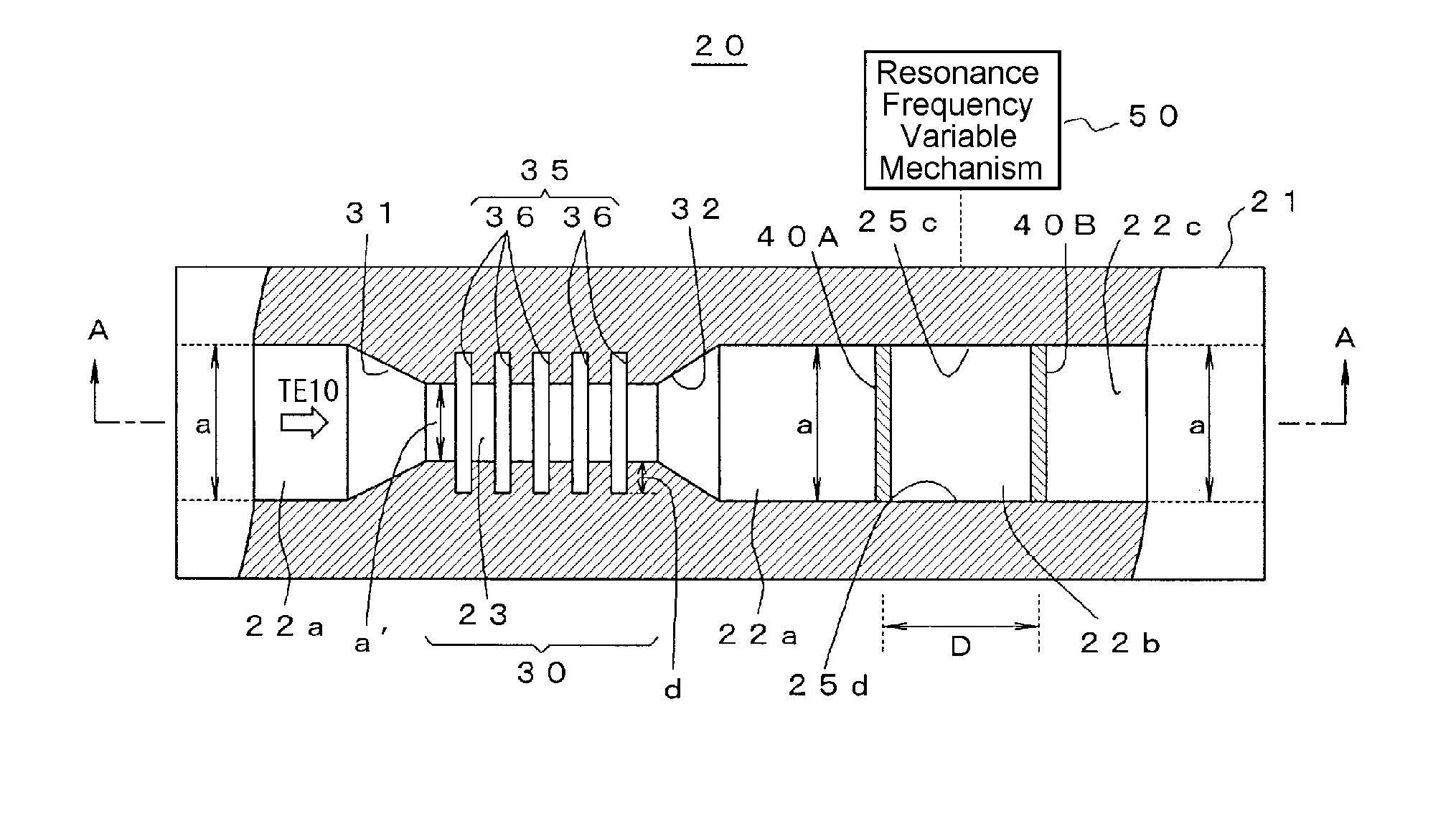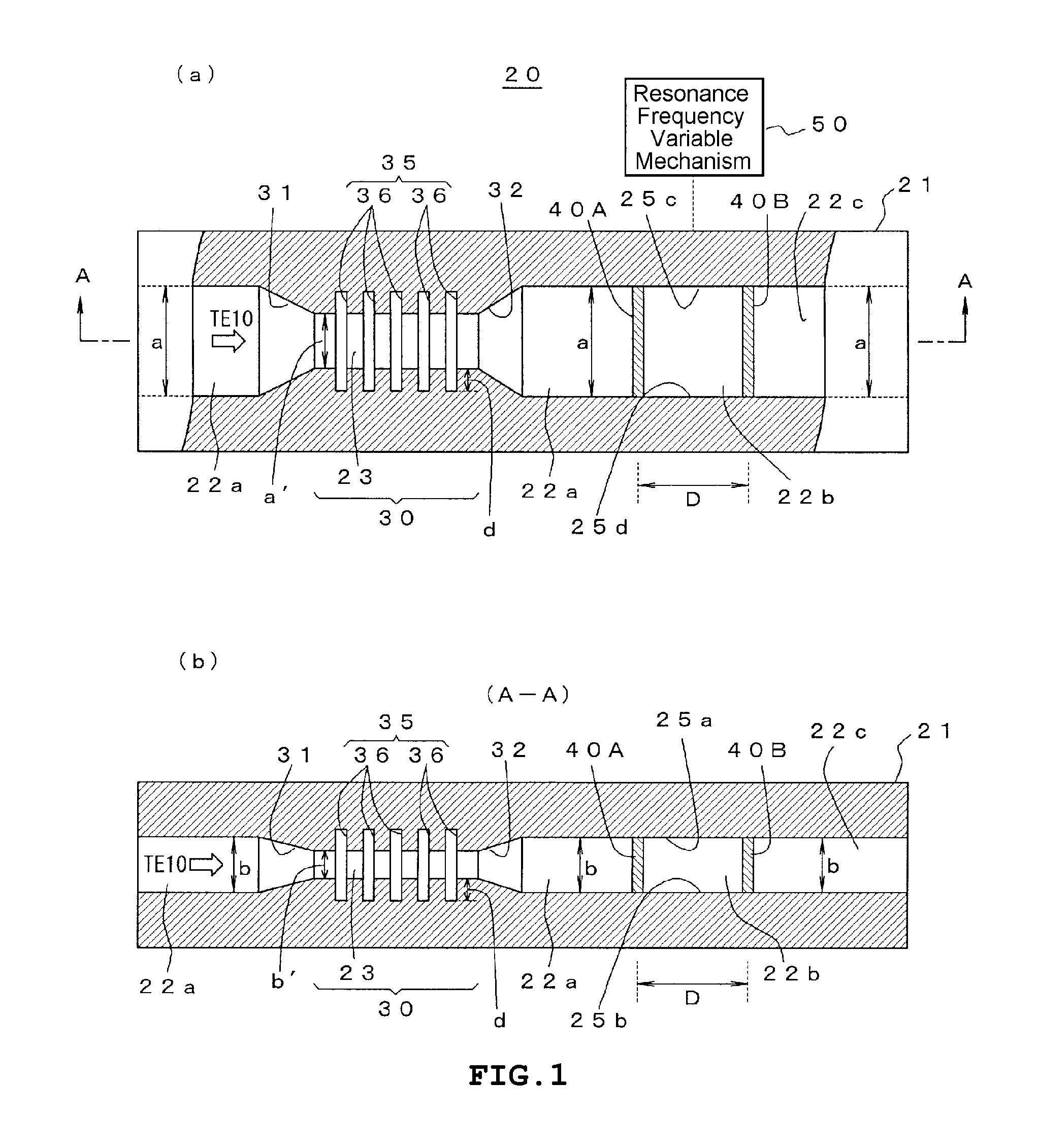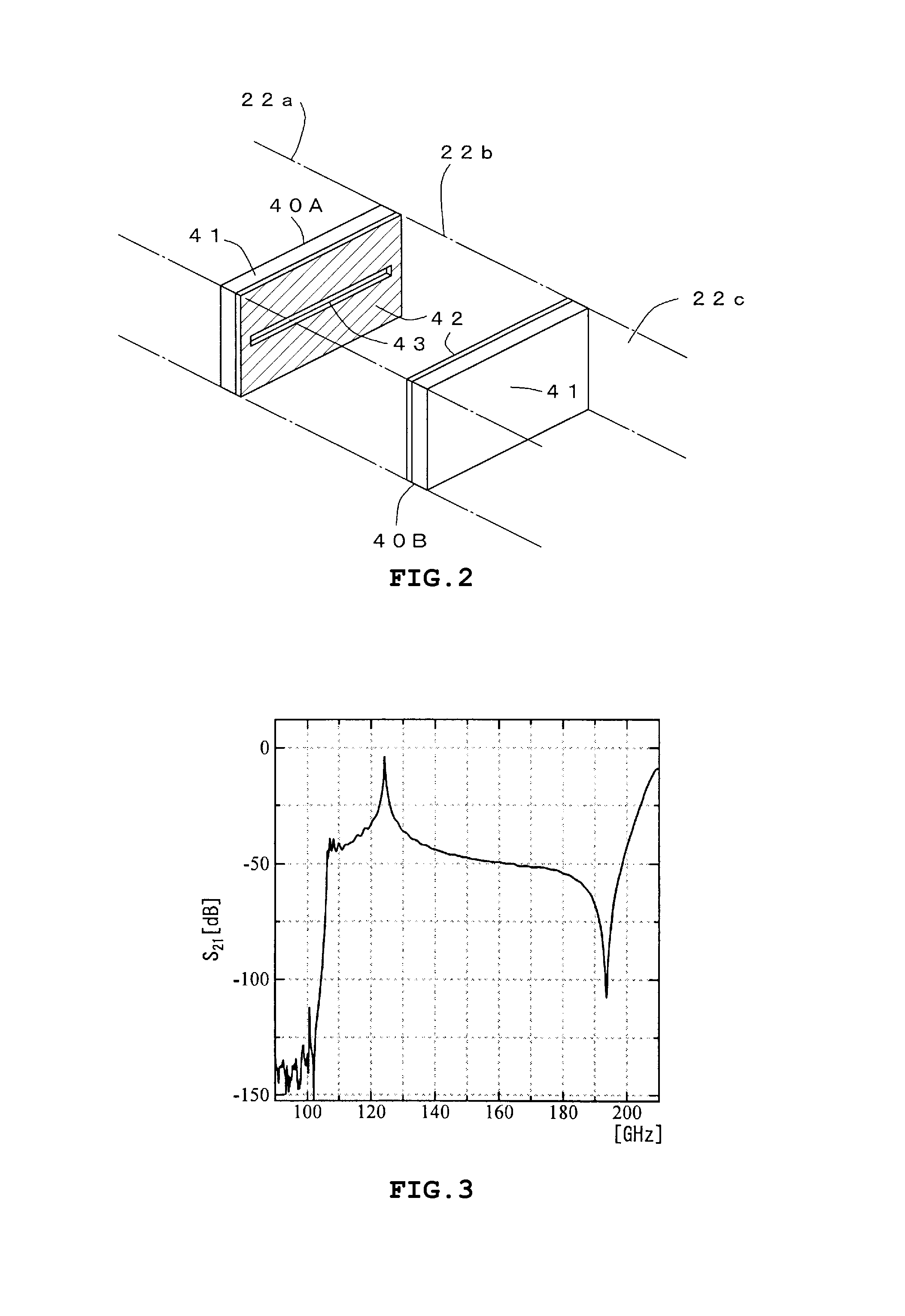Millimeter waveband filter and method of increasing rejection band attenuation
a filter and millimeter waveband technology, applied in the field of filters, can solve the problems of manufacturing difficulty at a frequency over 100 ghz, difficulty in strict measurement of unnecessary emission or the like, and inability to separate harmonics, etc., and achieve the effect of increasing the attenuation of the rejection band, serious affecting the passband characteristics of the filter, and high selection characteristics
- Summary
- Abstract
- Description
- Claims
- Application Information
AI Technical Summary
Benefits of technology
Problems solved by technology
Method used
Image
Examples
Embodiment Construction
[0042]Hereinafter, an embodiment of the invention will be described referring to the drawings.
[0043]FIGS. 1A and 1B show the basic structure of a millimeter waveband filter 20 according to the invention.
[0044]As shown in a side view of FIG. 1A, the millimeter waveband filter 20 has a waveguide 21, a pair of electric wave half mirrors 40A and 40B, and a resonance frequency variable mechanism 50 as a resonance frequency variable means.
[0045]The waveguide 21 has a hollow rectangular column, and a transmission line 22 which has a rectangular sectional shape and is of size (for example, standard size a×b=2.032 mm×1.016 mm) allowing electromagnetic waves in a predetermined frequency range (for example, 110 to 140 GHz) of a millimeter waveband to propagate only in a TE10 mode is formed continuously from one end to the other end excluding a portion corresponding to a high-pass filter 30 described below.
[0046]In the waveguide 21, a pair of electric wave half mirrors 40A and 40B which have ch...
PUM
 Login to View More
Login to View More Abstract
Description
Claims
Application Information
 Login to View More
Login to View More - R&D
- Intellectual Property
- Life Sciences
- Materials
- Tech Scout
- Unparalleled Data Quality
- Higher Quality Content
- 60% Fewer Hallucinations
Browse by: Latest US Patents, China's latest patents, Technical Efficacy Thesaurus, Application Domain, Technology Topic, Popular Technical Reports.
© 2025 PatSnap. All rights reserved.Legal|Privacy policy|Modern Slavery Act Transparency Statement|Sitemap|About US| Contact US: help@patsnap.com



